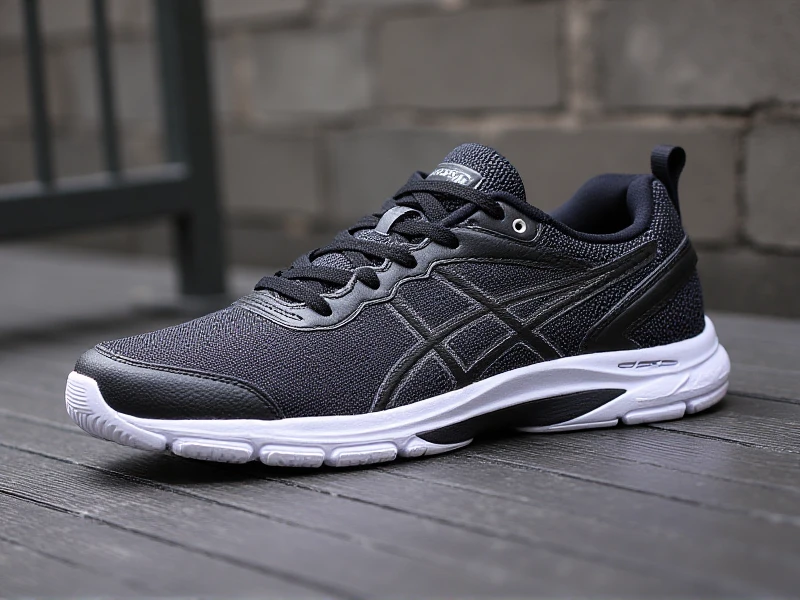Find Your Perfect Pair: The Ultimate Guide to Men's Running Shoes
2025-06-12

Optimized SEO Article
Finding the right pair of men's running shoes isn't just about comfort; it's about performance, injury prevention, and unlocking your running potential. Whether you're a seasoned marathoner clocking high mileage or a casual jogger hitting the pavement for fitness, the perfect men's running shoes make all the difference. This guide dives into the essentials you need to know before your next purchase.
Why the Right Men's Running Shoes Matter
Your feet absorb significant force with every stride – often several times your body weight. Ill-fitting or inappropriate footwear can lead to a host of problems: blisters, shin splints, plantar fasciitis, knee pain, and even lower back discomfort. The right men's running shoes provide crucial support, cushioning, and stability tailored to your unique gait and running style. They act as your foundation, enhancing efficiency, comfort, and ultimately, your enjoyment of the run.
Decoding Key Features of Men's Running Shoes
Understanding the core technologies helps you make an informed choice:
1. Cushioning: This absorbs impact. Levels range from minimal (lightweight, ground feel) to maximal (plush, shock-absorbing). Materials like EVA foam, PU foam, gel pods, air units, and newer super foams (like Nike's ZoomX or adidas' Lightstrike Pro) offer varying responsiveness and bounce.
2. Stability & Motion Control: Crucial for runners who overpronate (feet roll inward excessively). Look for features like medial posts (firmer foam on the inner side), supportive heel counters, and structured midsoles. Stability shoes offer guidance without being overly rigid.
3. Neutral: Designed for runners with neutral pronation or supination (feet roll outward). They focus primarily on cushioning without added corrective elements. Often lighter and more flexible.
4. Drop (Heel-to-Toe Offset): The difference in height between the heel and forefoot (e.g., 10mm, 8mm, 4mm, 0mm). Higher drop (e.g., 10-12mm) can reduce strain on the Achilles, while lower drops (0-6mm) promote a more natural foot strike but demand stronger calves/achilles.
5. Fit & Upper: Look for a secure heel lock, adequate toe box room (about a thumb's width), and breathable materials (mesh is king). Some offer engineered knit for targeted support. Ensure no pinching or sliding.
6. Outsole & Traction: Durable rubber (especially carbon rubber in high-wear areas) provides grip. Lug patterns vary – road shoes have flatter lugs, while trail running shoes for men feature aggressive, deeper lugs for mud and loose terrain.
Selecting Your Ideal Men's Running Shoes
Follow these steps for the best fit:
1. Know Your Gait: Visit a specialty running store for a gait analysis, even once. It reveals your pronation pattern and foot strike, guiding you towards stability, neutral, or motion control options.
2. Consider Your Terrain: Prioritize road-specific models for pavement, trail running shoes for off-road adventures, and versatile hybrids (like Nike Pegasus Trail) for mixed surfaces.
3. Match Your Mileage & Speed: Daily trainers offer balanced cushioning and durability. Speed/tempo shoes are lighter and more responsive for faster runs. Max-cushioned trainers protect on long distances.
4. Prioritize Fit Over Looks: Size can vary between brands and models. Always try shoes on (with running socks!) later in the day, as feet swell. Focus on comfort and support, not just the colorway. Walk and jog in-store if possible.
5. The Thumb Rule: There should be about a thumbnail's space (roughly half an inch) between your longest toe and the end of the shoe.
6. Replace Wisely: Most men's running shoes lose significant cushioning and support after 300-500 miles. Pay attention to increased aches or worn-out treads as signals.
Beyond the Basics: Maximizing Your Men's Running Shoes
Socks Matter: Choose technical running socks that wick moisture and reduce friction. Avoid cotton.
Rotate Pairs: If you run frequently, having two pairs (e.g., a daily trainer and a tempo shoe) can extend shoe life and vary the stress on your legs.
Lacing Techniques: Learn different lacing methods (e.g., heel lock, wide forefoot) to address specific fit issues like heel slipping or pressure points.
Invest in Your Stride
Choosing the perfect pair of men's running shoes is a vital investment in your health and running journey. By understanding your needs, key technologies, and prioritizing proper fit, you can confidently step out in footwear that supports your goals mile after mile. Don't settle for discomfort – embrace the run with the right support underfoot. Your next personal best starts with the right men's running shoes. Hit the ground feeling strong!
Category: